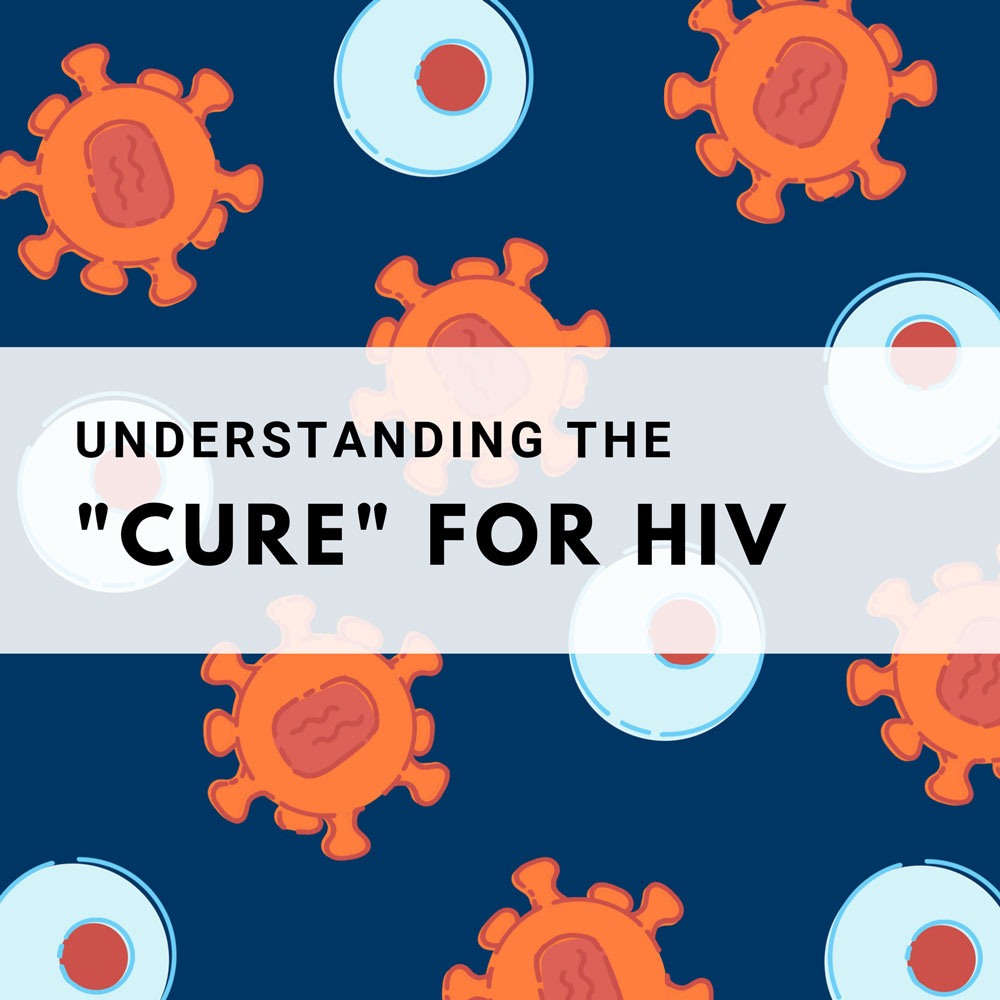
Written by Hayley McKay
Illustrated by Rebecca Michaels-Walker
If you’ve been following the news recently, you’ve probably heard that a second patient has been ‘cured’ of HIV. Not even a week ago, an unedited manuscript describing HIV remission in a patient after a stem cell transplant was published in the journal Nature, replicating the outcomes of a study produced a decade ago. Sounds amazing right? Well it is, but there are a few caveats the public (and media) should keep in mind before announcing to the world that HIV is cured.
HIV is a retrovirus that attacks the body’s immune cells, leading to the inability to fight infections – also known as acquired immunodeficiency syndrome (AIDS). HIV is usually controlled with antiretroviral treatments (ARTs), but thanks to this new publication, new light has been shed on novel treatment options that could become available in the future.
Although making the news, the treatment method isn’t actually new – in 2007 and 2008, a German team performed bone-marrow transplants to treat the ‘Berlin patient’ suffering from leukemia that wasn’t responding to chemotherapy. He also happened to have HIV. So, after wiping out his immune system with chemotherapy and radiation, his doctors performed the transplant with donor marrow that also carried a genetic mutation in both copies of the CCR5 gene that renders immune cells resistant to HIV infection.
After the transplant, the Berlin patient showed no signs of the HIV virus in his body and continues to be free of the virus, ten years later.
In recent years, there have been other attempts to replicate this finding, but none have succeeded until now. After a bone-marrow transplant, again with donor cells containing the CCR5 mutation, the ‘London patient’ has been free of the HIV virus since 2016. Similar to the Berlin patient, the London patient also had an aggressive and chemotherapy-resistant form of blood cancer in combination with HIV. This is an important point observe – the treatments were mainly performed to treat the patients’ cancers, and also ended up putting their HIVs into remission.
Bone-marrow transplants can be dangerous for both the donor and the recipient and are generally not performed unless nothing else works. So, to call this treatment a ‘cure’ is a stretch, because it is certainly not suitable for the vast majority of HIV patients who don’t also have chemotherapy-resistant blood cancers.
It is also important to note that the London patient is still in his early days of HIV remission – it is premature to call him ‘cured.’ It will be important to continue following his progress and attempt to replicate results in more patients before making any definitive statements about cures.
As always, nuance is important when discussing scientific developments, and often get lost in media translations. So, although there is no doubt the London patient’s HIV remission is a scientific breakthrough, it’s also important to take the context into account before jumping to conclusions, no matter how exciting they may be.
Sources:
- Gupta, R.K. et al. 2019. HIV-1 remission following CCR5Δ32/Δ32 haematopoietic stem-cell transplantation. Nature. DOI: 10.1038/s41586-019-1027-4
- https://www.nature.com/articles/d41586-019-00798-3
- https://www.vox.com/2019/3/5/18249607/hiv-cure-2019